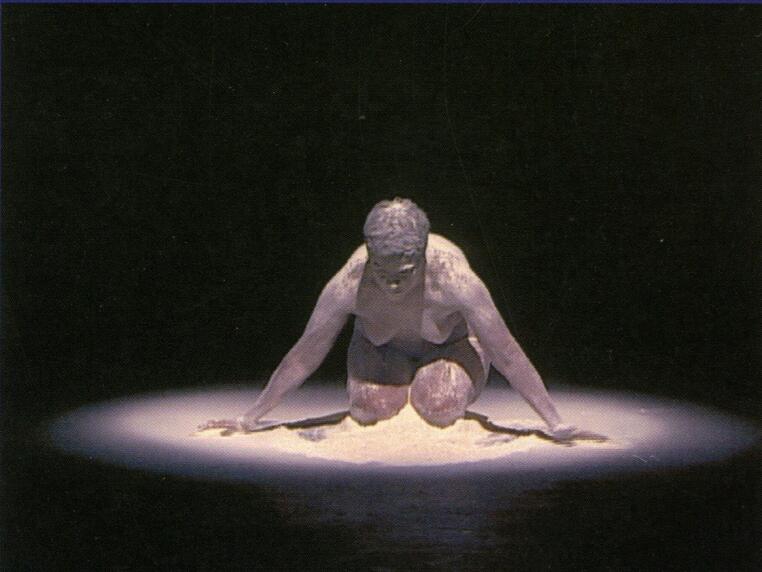The Davis Museum is closed for Wellesley College’s winter break. Please join us at our spring opening celebration on February 5, 2026, at 4 pm.

The forced dispersal of millions of Africans into foreign lands during the African slave trade created the African Diaspora, a global community of Africans and their descendants living outside the African continent. The Space Between explores how artists across the African Diaspora negotiated and reconciled a variety of cultural and racial heritages and identities.
Bernadette Searle, one of the artists whose work is highlighted, used a variety of media to confront the conditions of apartheid in South Africa, and to address the themes of identity (particularly racial identity), gender, and body image. Before the abolition of apartheid Searle was classified as “coloured,” a median racial category created for people of mixed racial descent. Through her video installation, Snow White, Searle dynamically confronts and engages color and racial politics.
Paul Vanouse, another featured artist in the exhibition, questions the use of science to determine race and racial hierarchies. He uses information technology to create interactive cinema and biotech installations to address the impact of contemporary culture on aspects of race, gender, and class.
Art from the Museum’s permanent collection, including works by Maria Magdalena Campos-Pons, Ellen Gallagher, Glenn Ligon, Lorraine O’Grady, and Adrian Piper, enrich this dialogue of artists across the Diaspora.
This exhibition is funded by the Andrew W. Mellon Foundation, Wellesley College Friends of Art, Davis Museum and Cultural Center Endowed Program Fund, and the Massachusetts Council for the Arts.
The Space Between: Artists Engaging Race and Syncretism is sponsored by the Wellesley College Department of Art, Harambee House, Ethos, and WCD (Women for Caribbean Development).